Call 724-253-2771
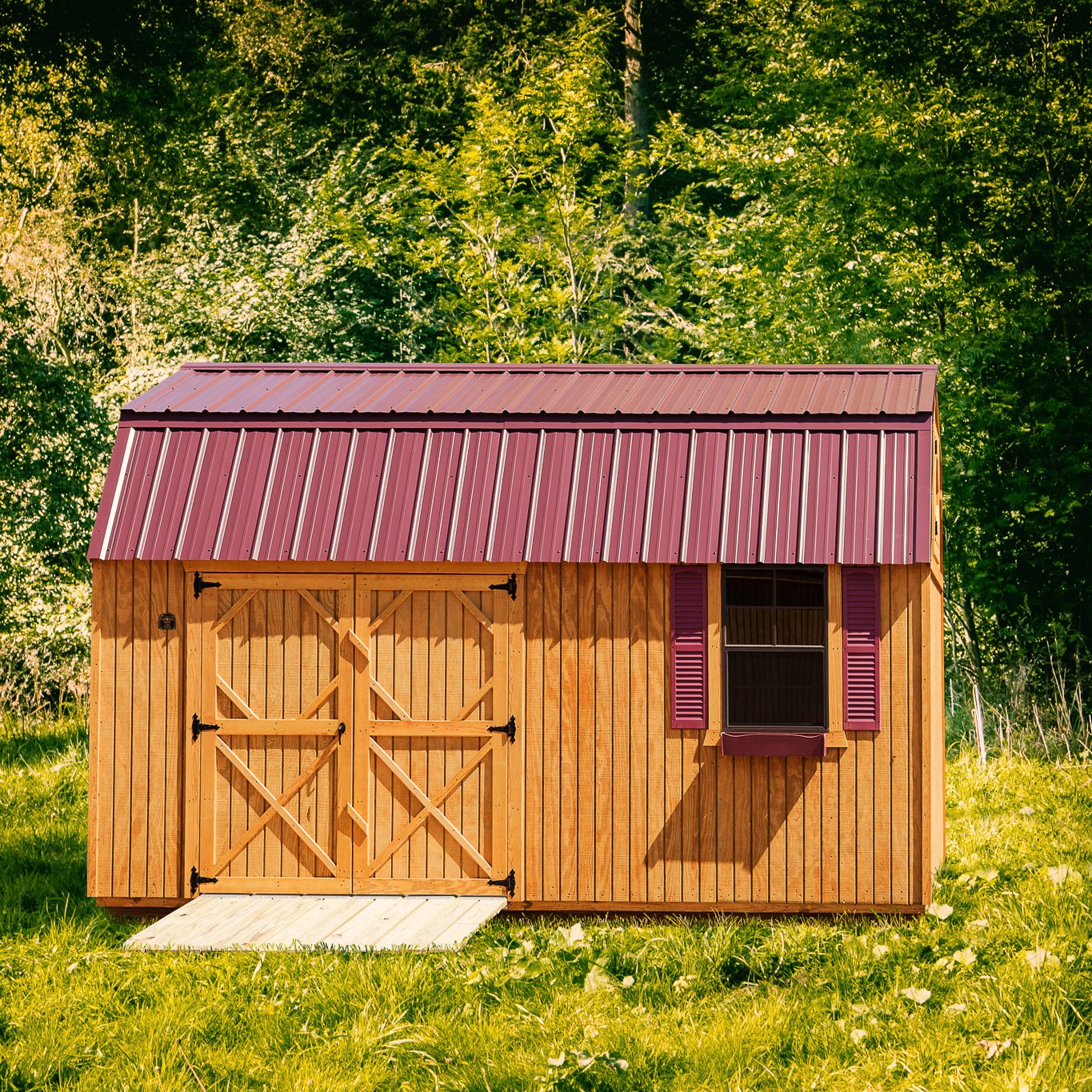
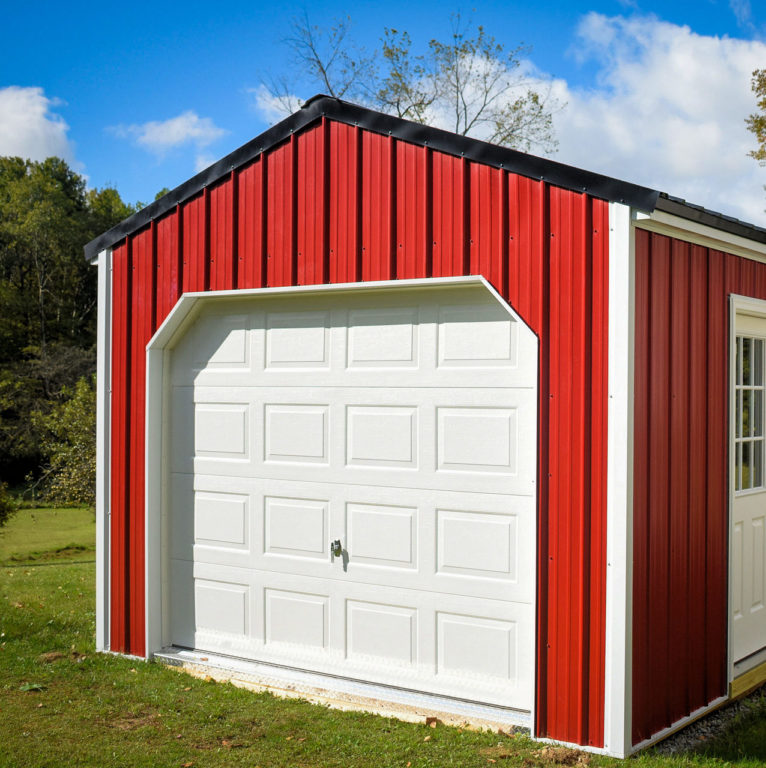
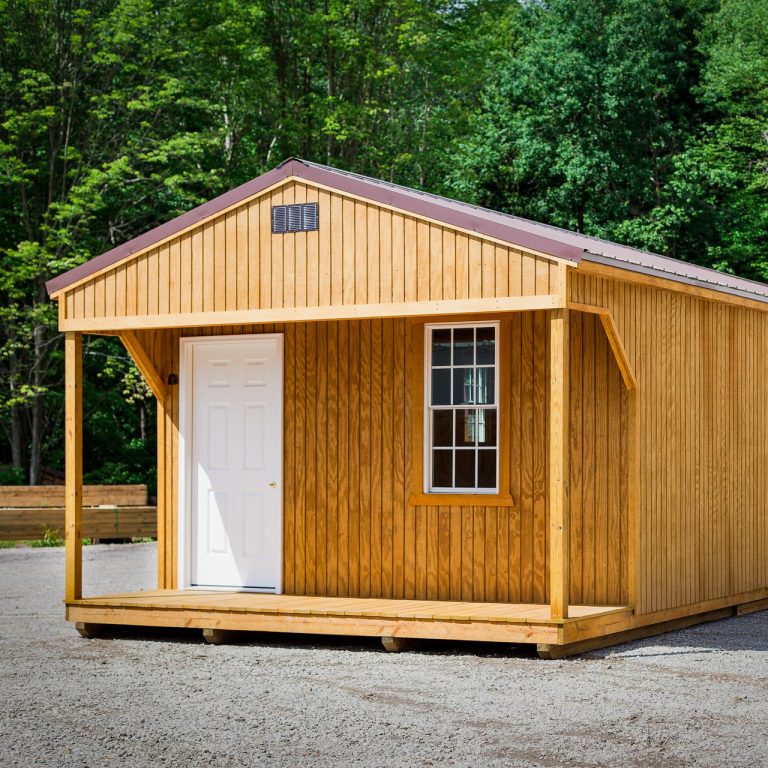
Get a free quote or Design Your Building
Want to see if a Gold Star building is right for you? Get a FREE quote or use our 3D Builder to design your own shed, garage, or cabin!

Perhaps you’ve never considered it, but the shed flooring may be the most important part of your shed. After all, it’s technically the part of your shed that gets used the most. If your shed floor is in weak or poor condition, your shed is essentially useless.
In this article, we discuss the best options for shed sub-flooring as well as great options for finished shed flooring. Whether you’re looking to buy a new shed or upgrade the shed flooring of a building you already own, our aim is to leave you better informed about your options when it comes to shed flooring.
Table of Contents
The subfloor of your shed is a crucial part of the shed structure. Having a solid subfloor will give you the ability to store heavy items like tractors, as well as heavy gym equipment, if you use your shed as a home gym. If you’d like to learn more about the high-quality materials that we use, such as 5/8″ or 3/4″ pressure-treated polywood flooring on sheds and garages, check out our high-quality shed features page. But here are a few of the best options for your shed’s sub-flooring.
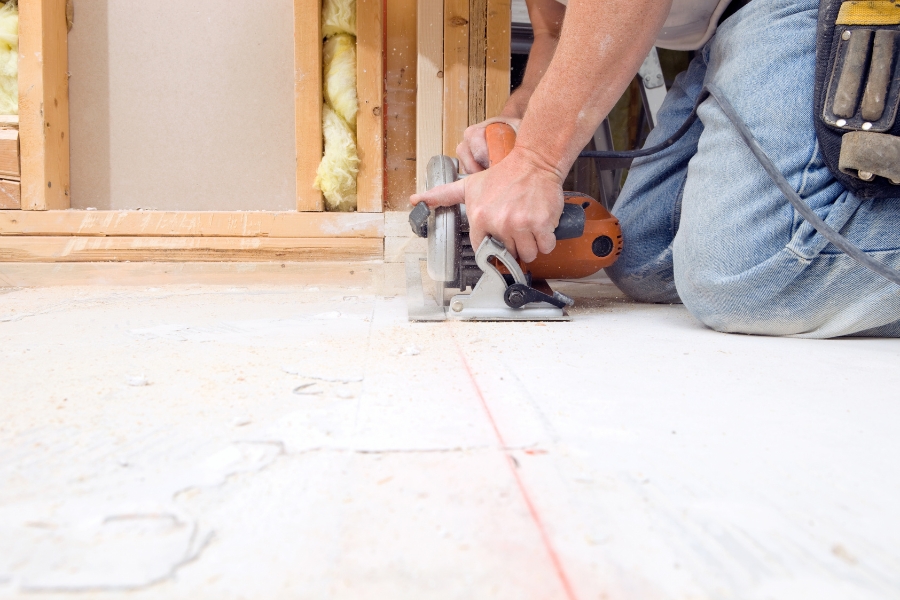
Pressure-treated plywood is one of the most common shed flooring options, and for good reason. ⅝ ” to ¾” plywood is the most common subflooring shed builders use since plywood that’s been pressure-treated is resistant to moisture and rot and will last for quite a long time. It also features a smooth finish that’s easy to sweep and clean. This style of flooring also makes it easy to install carpet and vinyl planking, making it a great choice for finished sheds.
Plywood Shed Flooring Pros:
Plywood Shed Flooring Cons:
If you’re looking for great plywood flooring options, check out LP Building Solutions.

OSB is one of the cheapest subfloor options, and is typically seen as a lower-cost alternative to plywood. It isn’t quite as strong as plywood, and typically doesn’t hold up to moisture as well as plywood. However, if you’re looking for a low-cost flooring option and don’t mind how it looks, OSB could be a viable option.
OSB Shed Flooring Pros:
OSB Shed Flooring Cons
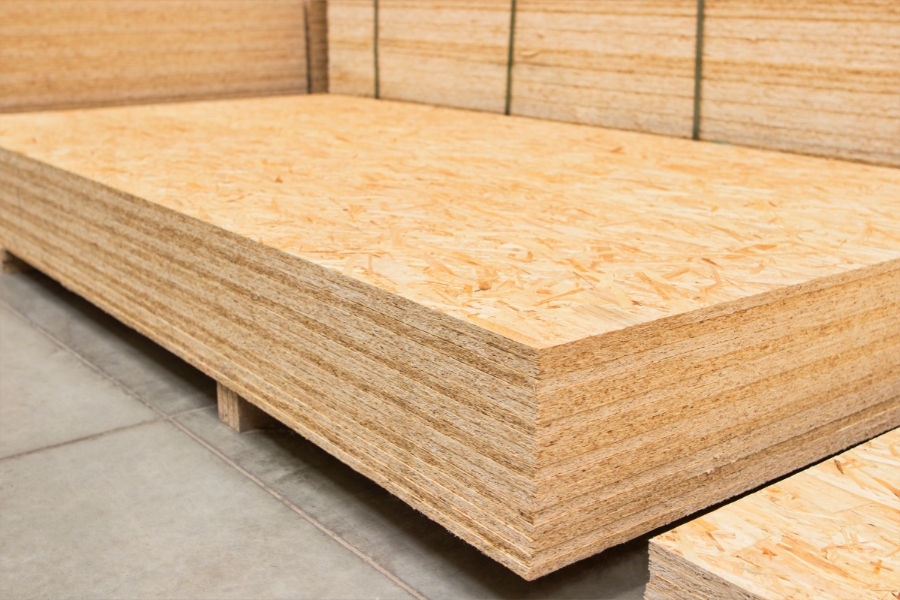
Using composite decking as a shed floor without any additional subfloor is not a popular option, but can be a good choice in certain situations. Composite deck boards are quite durable and are very moisture resistant.
If you plan to use your shed in a way that requires it to be washed regularly, the gaps between the deck boards would allow the water to drain away. Deck boards, however, aren’t as rigid as plywood, so it would be a good idea to add extra runners to support the flooring.
Composite Deck Boards Pros
Composite Deck Boards Cons
For some composite deck board options, check out Home Depot or Lowe’s.
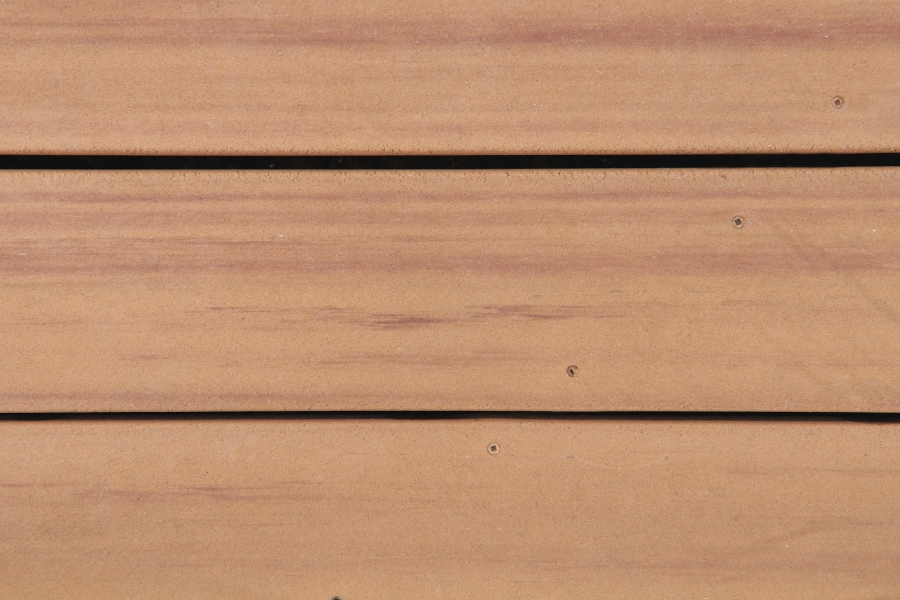
The strongest flooring option is to simply use a concrete slab as the flooring. In terms of strength and durability, nothing beats concrete. It can be expensive, but since the concrete can be both the shed foundation and the flooring, it can be a cost-effective option.
To use concrete as the shed floor, the shed is essentially fastened to the concrete pad, which makes the shed immovable. Some people may see this as a downside, but it also makes the shed quite sturdy.
Concrete Shed Flooring Pros
Concrete Shed Flooring Cons
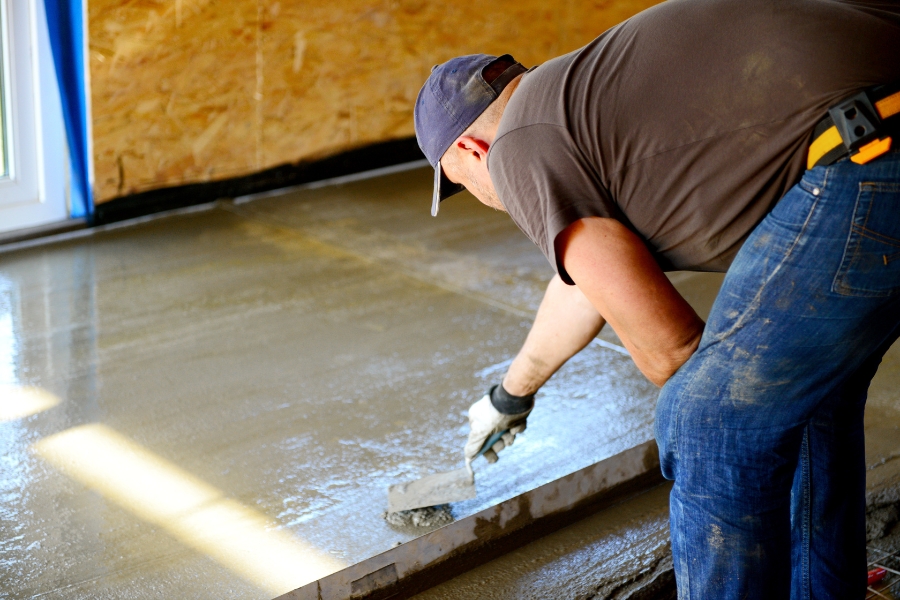
Have more questions about subflooring? Feel free to contact us, and we will do our best to answer your questions. Want to know that your shed is built with quality? View our current inventory, or create a building that fits what you need with our 3D builder.
Many shed owners simply leave their shed subflooring exposed since sheds are typically used as storage or as workshops. However, more and more people are choosing to finish their sheds and use them as living spaces, shed homes, or home offices. Check out our shed ideas article for inspiration and to see how others have finished their shed floors. But here are a few great finished shed flooring options:
The easiest and cheapest way to finish your shed floor is to paint or stain it. This is easiest if your shed flooring is wood, but concrete can also be stained. Not only does paint improve the look of a shed’s interior, but it also helps protect the flooring, especially if the shed flooring is made from untreated wood.
Painted or Stained Flooring Pros
Painted or Stained Flooring Cons

Vinyl plank flooring is one of the most popular flooring options for a variety of living spaces, including homes, offices, and finished sheds. This vinyl plank flooring both looks great and is quite durable. Vinyl planking, however, is susceptible to temperature fluctuations and should only be used if your shed is climate-controlled.
Vinyl Plank Flooring Pros
Vinyl Plank Flooring Cons
Vinyl planking can be found at most large hardware stores as well as stores such as Decks Direct.
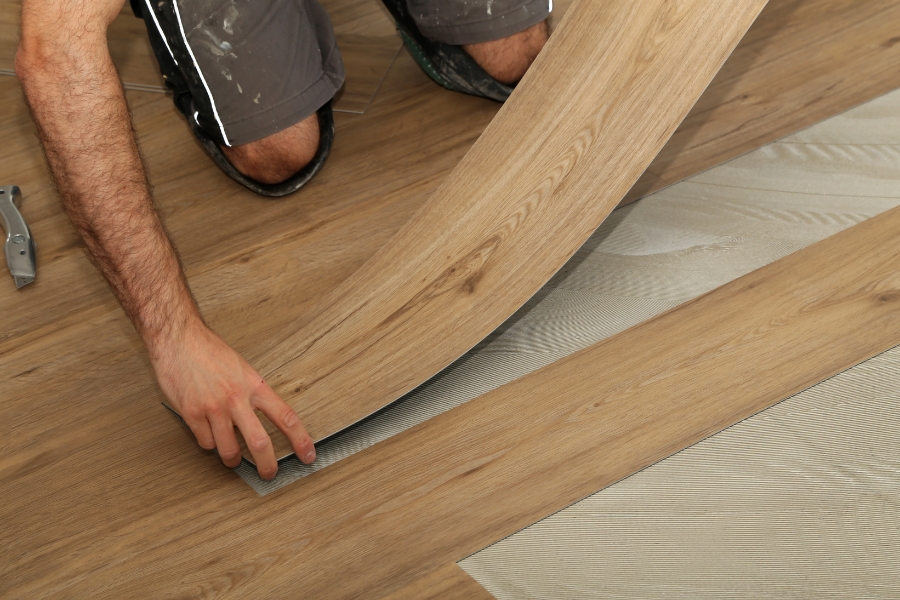
Rubber tiles are popular in garages and gyms, but can also be used in sheds. Rubber tiles offer both durability and protection for the subfloor, but also make the floor a bit softer and forgiving than bare wood.
Rubber Tile Flooring Pros
Rubber Tile Flooring Cons
For some great rubber tile flooring options, check out Rubber Flooring Direct.
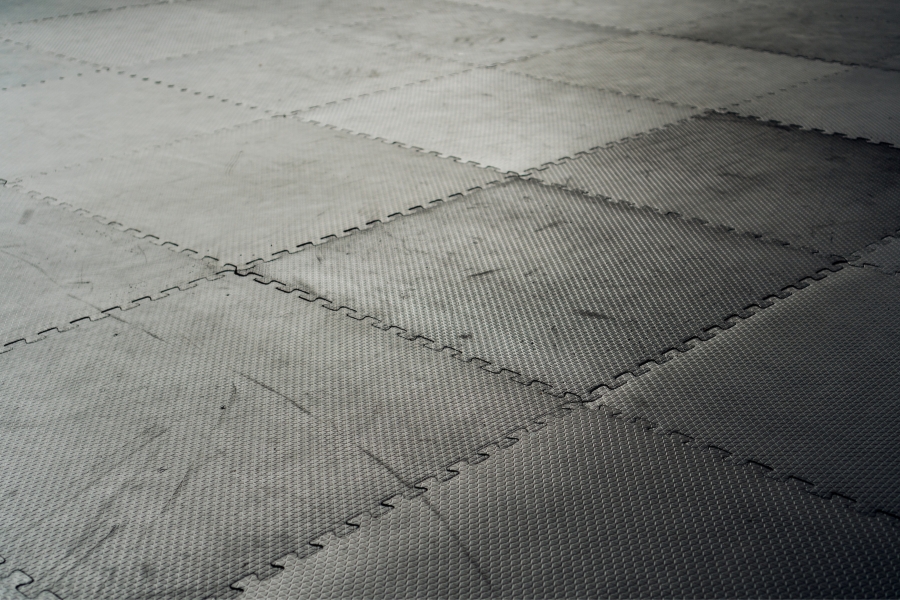
Epoxy can be applied to both concrete and wood flooring, and is a great way to upgrade the look and durability of a shed floor. This type of finish is relatively easy to apply and is popular with DIYers.
Epoxy Flooring Pros
Epoxy Flooring Cons
For more information on epoxy flooring, check out this article from Sherwin-Williams.

One of the easiest ways to upgrade a shed’s interior is by adding carpet. Carpet is a great choice if you happen to have some extra material from another project or love the warm feel of carpet. However, carpet isn’t the most durable choice and isn’t the best option for workshop sheds
Carpet Flooring Pros
Carpet Flooring Cons
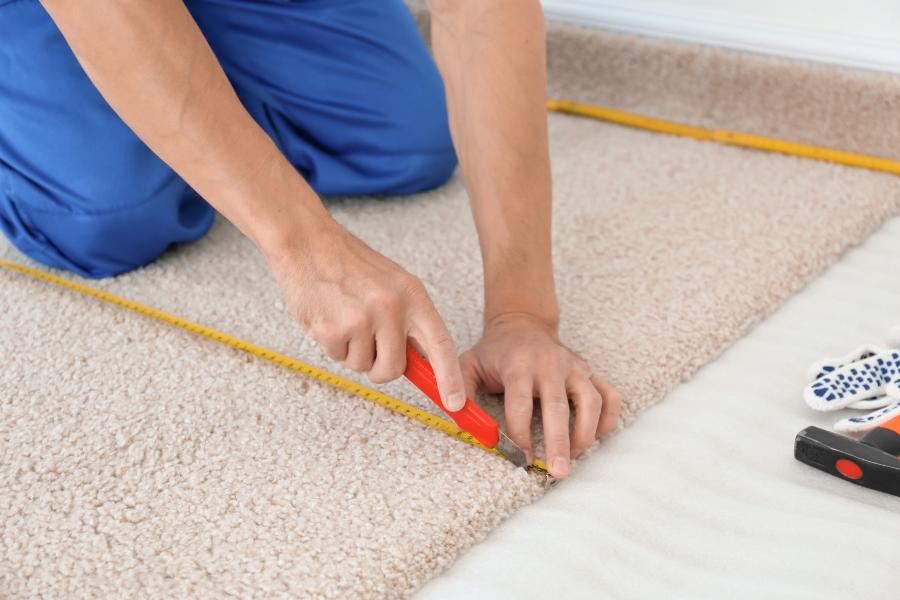
While we don’t offer flooring installations, we do offer electrial packages as apart of our 3D builds allowing you to start installing your own floor as soon as its delivered! Want to see whats possible for you, check out our current inventory or request a quote.
Not all sheds need to have an insulated floor, but if you plan to heat your shed, it’s probably a good idea. If you plan to finish out your shed and add heating and cooling, your shed floor should be insulated. For more heating and insulating tips, visit our blog on how to heat a garage shed in winter.
Keep in mind that some shed flooring options, like vinyl planking and epoxy finishes, are best used if the shed is climate-controlled and the floor is insulated. Below are a few popular shed floor insulation options.
Spray foam insulation is the most popular shed floor insulation option, and the best overall choice. It’s the most durable and provides great R-value, even in small spaces. However, it isn’t the cheapest option, and it requires a sprayer to apply.
Batt insulation is one of the easiest types of insulation to install and is popular with DIYers. It’s also a low-cost option. It isn’t quite as effective as spray foam and isn’t as durable.
Foam board insulation is applied by cutting the board to a specific size and adding the board between the shed floor joists. This makes the installation a bit more tedious than the other options, as the pieces need to be precisely cut. However, it’s still a good option and relatively low cost.
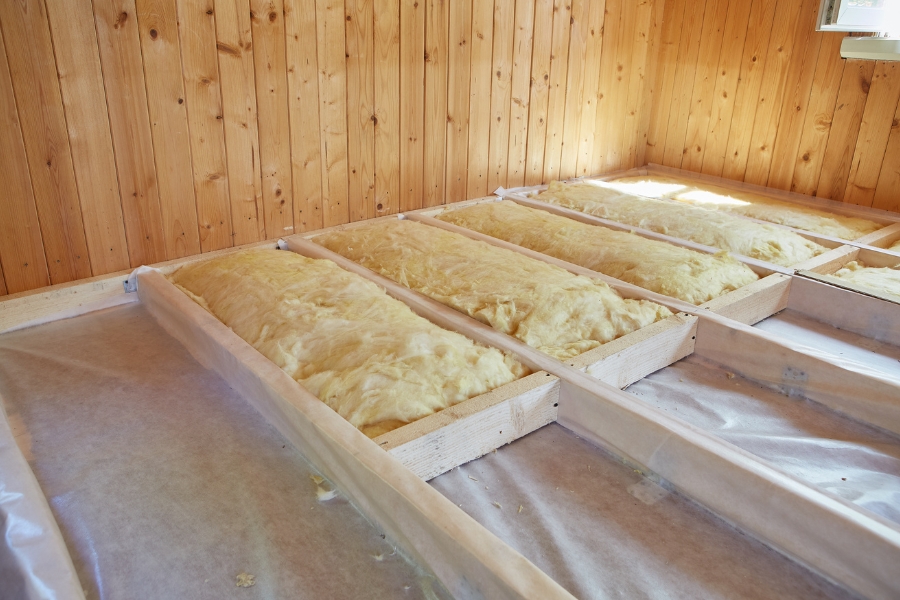
Whether you’re buying a new shed or are upgrading the floor of an existing shed, it’s important to have a shed floor that’s both durable and serves your needs. We hope this article gives you the information you need to make a great choice for your next shed floor. What to design your own shed, cabin or garage to finish out yourself? Explore our 3D builder and create one that suits you best. Feel free to reach out to us with any questions you have about shed flooring or other questions about our sheds.



Want to see if a Gold Star building is right for you? Get a FREE quote or use our 3D Builder to design your own shed, garage, or cabin!